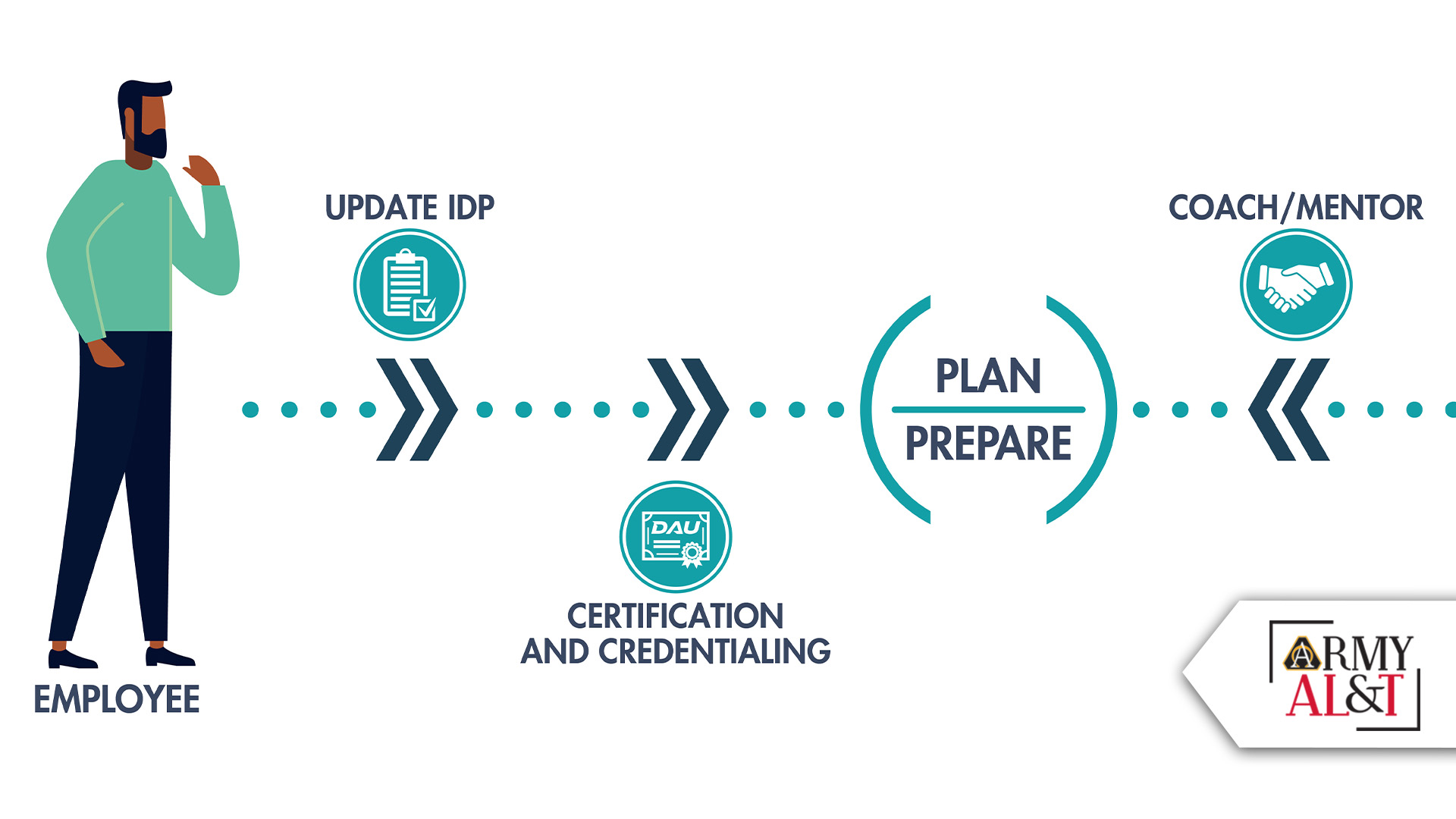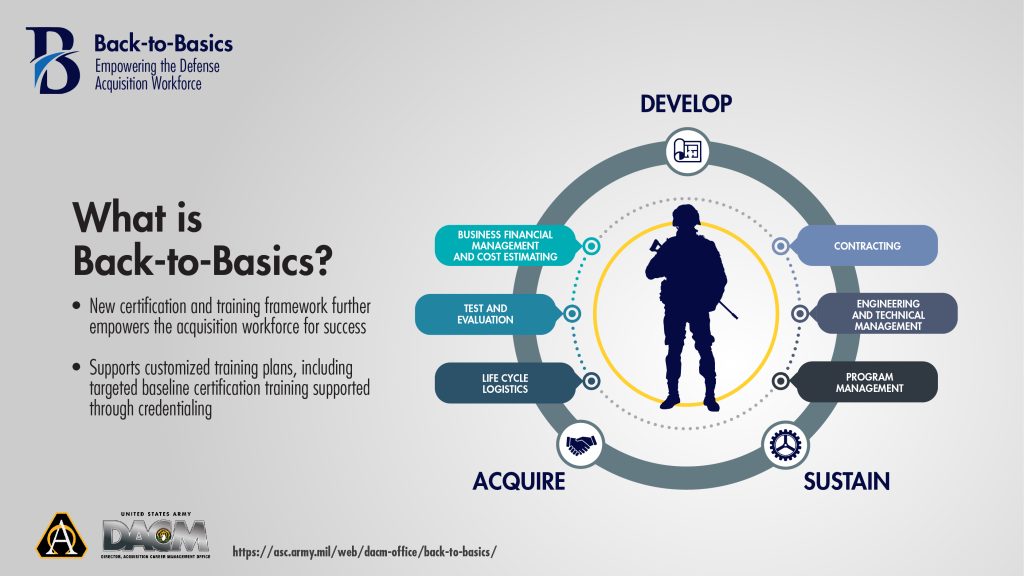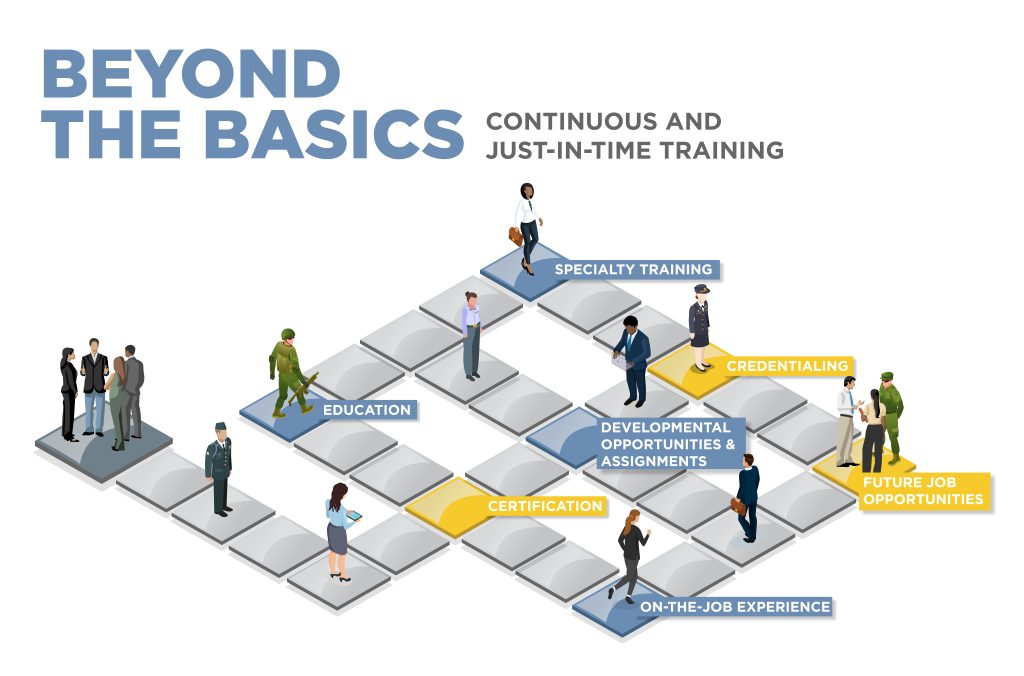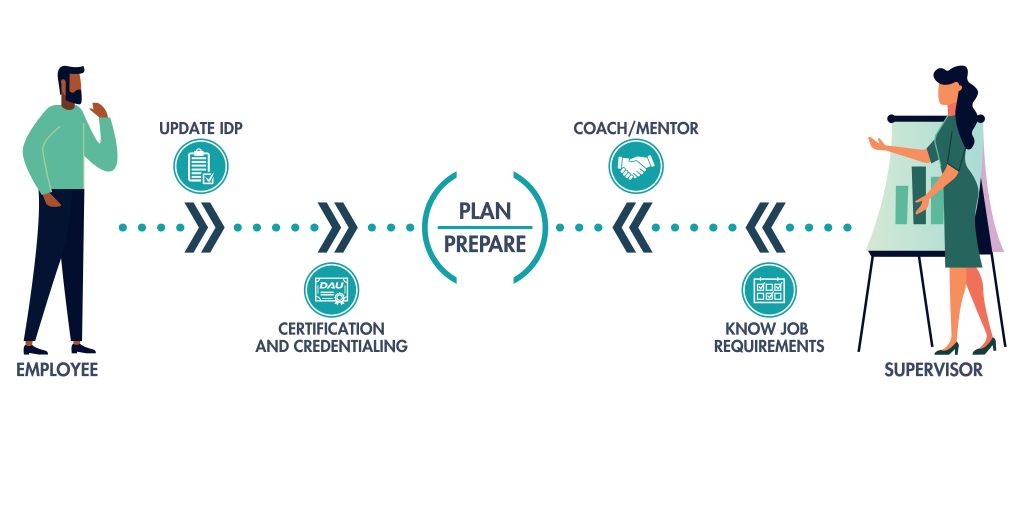
From the Director of
Acquisition Career Management
Ronald R. Richardson Jr.
New framework, better alignment.
The Army Acquisition Workforce is now working under a new and improved framework.
On February 15, the Army implemented “Back-to-Basics”—a talent management initiative meant to streamline acquisition workforce functional areas and prioritize training resources.
The previous 14 Army acquisition career fields are now six functional areas with seven certification tracks, which are more closely aligned with our acquisition modernization priorities. (See Figure 1.)

FIGURE 1: FUNCTIONAL AREAS: The six functional areas of the Back-to-Basics framework are business financial management and cost estimating; test and evaluation; life cycle logistics; contracting; engineering and technical management; and program management. (Graphics by USAASC)
The Back-to-Basics initiative also required that we reevaluate which positions make up the Army Acquisition Workforce, focusing on those professionals who develop, acquire and sustain operational capability. That effort resulted in decoding out some positions of the Army Acquisition Workforce. Our total workforce numbers are now just over 32,000 compared to the more than 40,000 under the previous framework. We’re a more focused workforce, aligning better with the needs of the acquisition enterprise.
HOW IT STARTED
The Defense Acquisition Workforce Improvement Act (DAWIA) became law in 1990. Around that time I was a young Army captain, and I remember the race to get certified in your acquisition career field. This was a new requirement. There was also a general sense that the more certifications you had the more competitive you would be as a candidate for promotion.
I recall the first level of certification being a big lift. I took ACQ 101 at Hanscom Air Force Base with a diverse group of acquisition professionals from whom I learned a great deal and, in all candor, probably more than from the course itself. The group at my table consisted of an Air Force officer from the B-52 follow-on operational test and evaluation program, an Army civilian from the Patriot Missile program, a Navy officer working Phalanx sustainment, a food scientist from Natick Soldier Systems Center, and me. As I recall, the course itself was three weeks long, and included a wealth of information, such as an introduction to all major acquisition functions. We went through the Program Manager’s Handbook in its entirety; learned a lot about planning, programming, budgeting and execution; and discussed case studies on predominantly Acquisition Category (ACAT) I programs. For many of us, it would be another 20 years before we would have the opportunity to work on a major defense acquisition program. Others would never receive that chance.
Over about the next year and a half, I took all of the Defense Acquisition University (DAU) coursework I needed for Level II certification in both program management and systems engineering, as well as Level I qualifying courses in most of the other (six at the time, if I recall correctly) acquisition career fields. As the number of career fields expanded and the workforce grew, I noticed that there was tremendous overlap between classes, both within the career field as well as between career fields. Such was the repetition that as much of half the training was often a repeat of what I already knew or had learned in previous courses. It seemed a refresher of training content became more and more necessary as we changed jobs—our minds a bit fuzzy on all the content we learned in that ACQ 101 class so many years ago.
HOW IT’S GOING
Back-to-Basics was the first major reform of the defense acquisition management framework since my time as a captain back in the 1990s, and it was a necessary one.
Our Army continues to face limited resources, especially training resources. But more importantly, this transition serves as a reminder of what’s important with regard to individual and workforce professional development.
Under the previous system, I think people lost sight of what was truly important, and sometimes confused certification with qualification. Acquisition courses and certifications alone didn’t make me a good program manager—that was the result of my overall education, the totality of the institutional learning, the continuous learning offered through DAU and other sources, my on-the-job experiences, and the lessons learned and professional connections I made that really prepared me to advance and take on more responsibility. (See Figure 2.)

FIGURE 2: ALL THE RIGHT MOVES: Continuous learning, on-the-job experiences and professional connections are at the heart of Back-to-Basics.
As an Army Acquisition Workforce professional, this is the journey you are now empowered to take for your career. You and your direct supervisor are now in the driver’s seat. Discussions about career path need to be on-going and documented in the individual development plan. Supervisors serve as mentors, and provide training recommendations that are relevant, timely and meaningful for the employee, the team and the organization. It’s a great position to be in to be able to chart your own path. Our supervisors can grow their employees and encourage them to prepare and move into better, more challenging positions. (See Figure 3.)

FIGURE 3: CAREER COLLABORATION:
Supervisors and employees collaborate to create the best career path for the employee.
|
CHECK IT OFF I understand moving into Back-to-Basics is a big shift. To set yourself up for success, I recommend you take the following actions:
Your first-line supervisor should be your first point of contact for all issues related to Back-to-Basics, but my team is here for you too. Our acquisition career managers are standing by to fix any issues or clarify guidance. |
Professionalizing the Army Acquisition Workforce is my top priority. We’re doing all we can to prepare our professionals to take on some of the most challenging acquisition assignments. Quality training and depth of experience—learning your craft and doing the job is what will enable our success.







